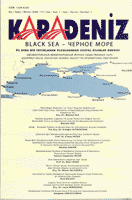KARAGÜNDÜZ ERKEN DEMİ R ÇAĞ İ SKELETLERİ NE Aİ T DİŞ LERİ N ODONTOMETRİ K ANALİ Zİ
ODONTOMETRIC ANALYSIS OF THE KARAGUNDUZ EARLY IRON AGE SKELETONS
Author(s): A. Cem Erkman, Nevin ŞİMŞEK, Asuman ÇIRAK, Gülüşan ÖZGÜN BAŞIBÜYÜKSubject(s): Anthropology
Published by: Kültür Ajans Tanıtım ve Organizasyon
Keywords: Dental Anthropology; Odontometry; Tooth Shape; Tooth Dimensions
Summary/Abstract: Size, shape and structure of teeth, usually are determined by our genes. This contains not only crown and root, but also numberless specials of teeth. On the contrary of bone structure, the tooth dentine, which hasn’t got living tissues, doesn’t take on a shape again related to decreasing or increasing functions. Often metric measurements have been referred in order to the determination of degree of biological closeness among ancient populations. Metric measurements had used for understanding diversity of the ancient populations, because the differences of measurements were much smaller than appearing. Because of the periodical changes in the climate, the major part of the populations, who lived in the East of Anatolia from early B.C. 2000 to middle B.C. 900, travelled with their domestic animals and used to live in their tents. The skeletons excavated from Karagunduz necropolis, from this period, which were important tombs in early Iron Age, are used for odontometric analysis, and these results help us to explain biological distance with other ancient Anatolian populations.
Journal: Karadeniz Uluslararası Bilimsel Dergi
- Issue Year: 2009
- Issue No: 02
- Page Range: 29-43
- Page Count: 14
- Language: Turkish

